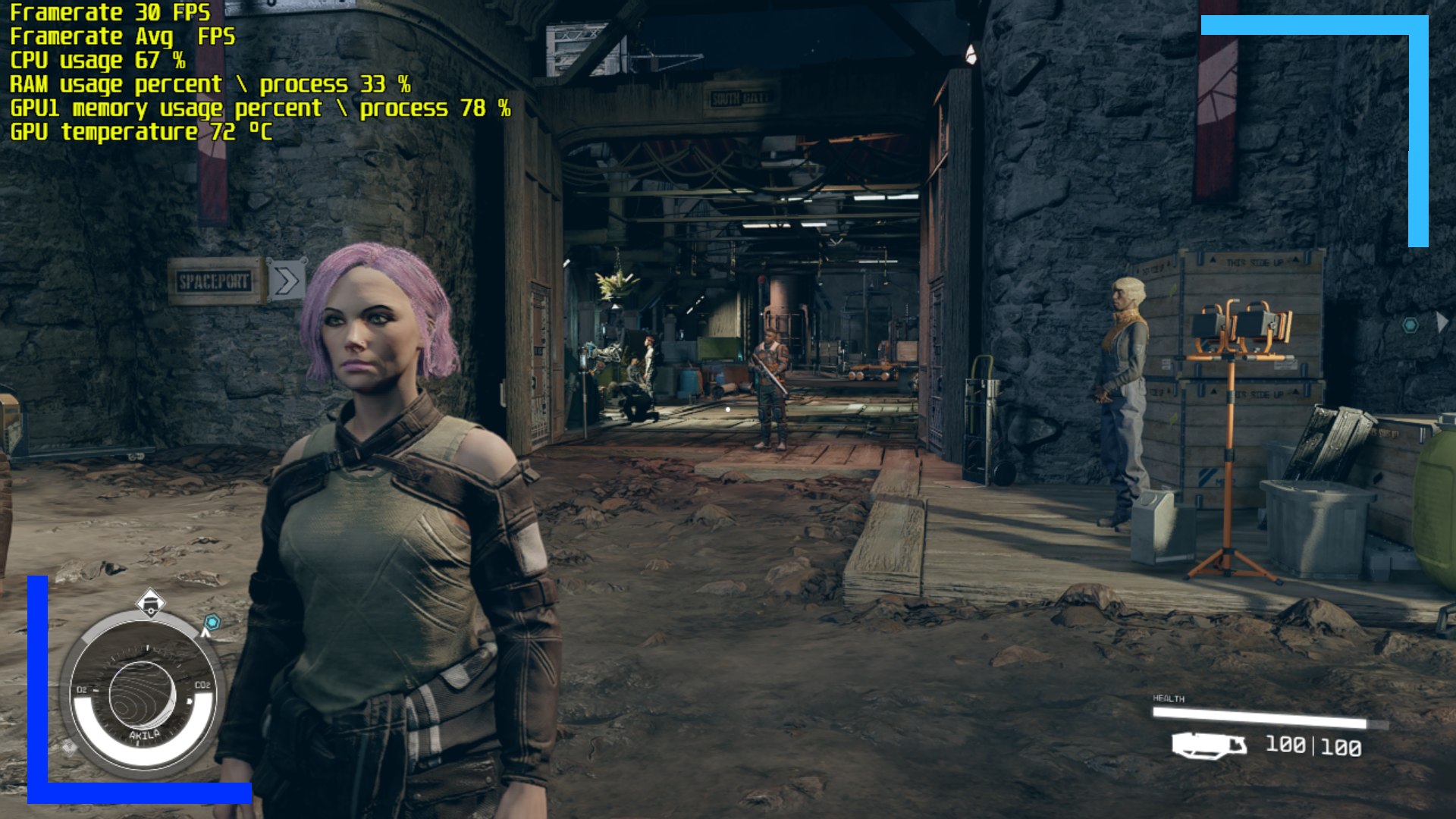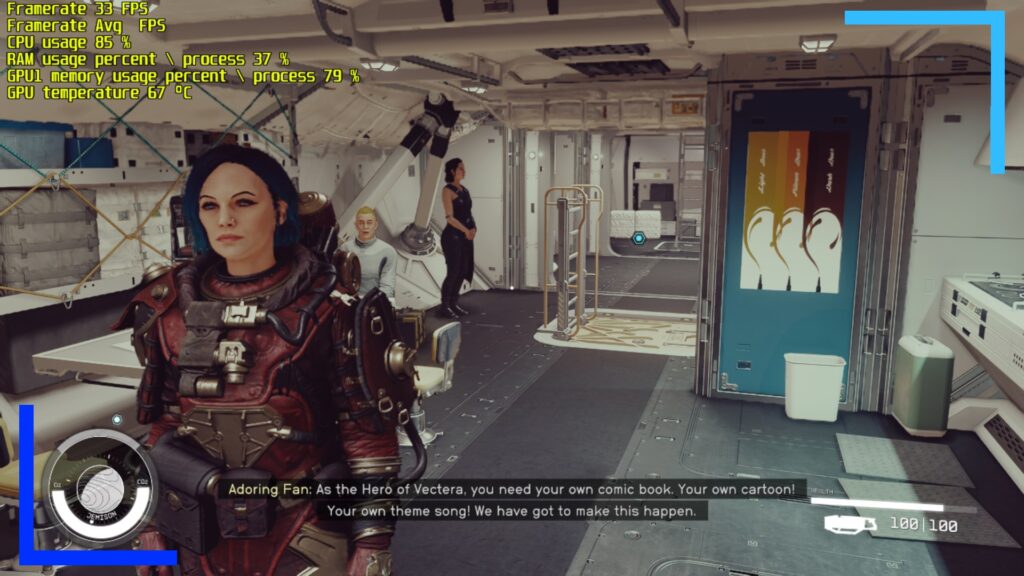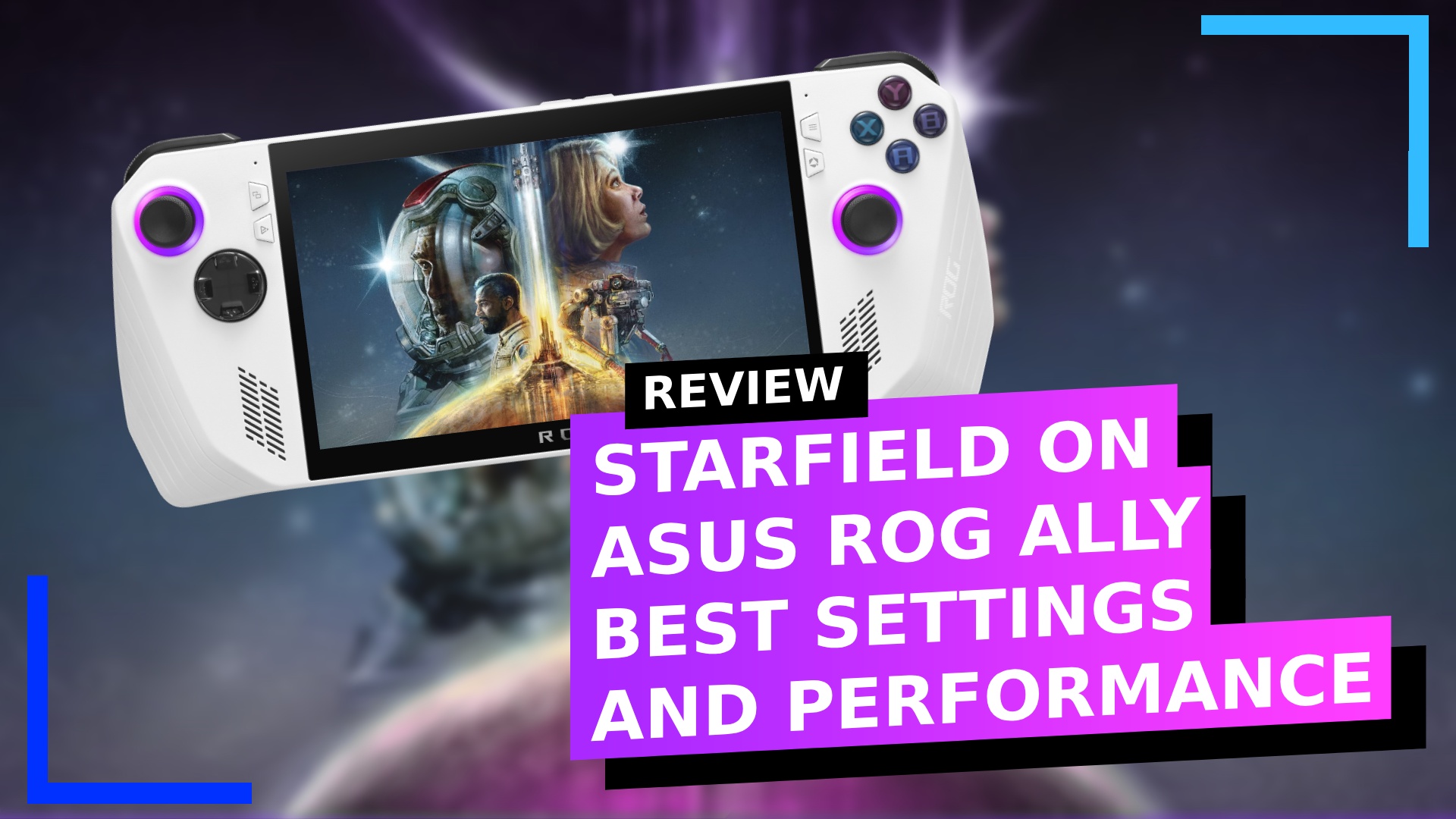How well does Bethesda’s latest role-play game Starfield perform on the ASUS ROG Ally and is it safe to buy it yet? Read on to find out how Starfield handles and how to get the best performance in this first look.
Performance Beats the Steam Deck.
Unlike the Steam Deck version, Starfield runs well on the ASUS ROG Ally. It’s imperfect for sure, but it’s very playable.
So, let’s talk imperfections. Starfield runs at 30 frames per second for the most part. There are areas where that value will inch closer to 40, and there will be areas where it drops to the high 20s. Why the wide margin? It’s down to how complex Starfield is.
If you’re in a room with a handful of enemies, things should tick along around 30 frames per second. But in the busier areas, or when there’s lots happening on-screen, that’s where things take a tumble.
What I will say is Starfield on the ASUS ROG Ally handles the dips better than on the Steam Deck. On the Deck, nearly every drop is felt and felt hard. On the Ally, you’ll only spot some of the drops, and for the most part, they pass fairly quickly. That doesn’t mean there aren’t areas the ROG Ally won’t struggle in, but the amount of times it does struggle is fewer than on the Deck.
Starfield is imperfect, but given the complexity of the game, the fact it can run this well on the Ally is a win.
Note: If you haven’t already, be sure to update your ASUS ROG Ally to get the Starfield patch.
Recommended Settings.


Pictured: Left is Starfield at 50 percent resolution. Right is at 100 percent. Credit: RetroResolve.
My settings for Starfield on the ROG Ally trade in visual fidelity for stronger performance. The plan here is to crank everything down aside from the render resolution scale so we’ve got power spare for the game to take advantage of.
The big difference here from the Steam Deck version is we can use that excess to bring the visuals up. On Steam Deck the render resolution scale needs to be dropped down to 50 to 75 percent, resulting in blurry, pixelated visuals. Whereas because we’ve freed up as much power as we can, on the Ally we can set that render resolution to 75 or 100 percent, resulting in much cleaner graphics.
I’ve included both 75 percent and 100 percent as an option because it may be worth dropping the resolution in certain areas, namely cities where there’s a large settlement. Personally, I don’t like having to switch settings every time I load into an area, so if you want the best performance go with 75 percent, or if you want the best visuals and don’t care if some areas suffer drops, go with 100 percent.
One of the biggest drawbacks to running Starfield on the ROG Ally comes in the form of the dire battery life. During my testing, the game would frequently be pulling around 43 watts. To put that in perspective, even Cyberpunk 2077 has a longer battery life.
Of course with a complex release like Starfield, you’re going to need extra power to get it to run at a decent framerate. That’s not a get-out-of-jail-free card, obviously, but it is more understandable when it’s a big release like this.
I’d also avoid trying to play Starfield in docked mode if you can. You can’t really get away with running the game at 1080p, so unless you’re playing on a smaller screen, Starfield in 720p is going to look mighty stretched and distorted.
I did take some time to try out Starfield with the XG Mobile attached, and while the results were always going to be better than using just the ROG Ally, it’s a good example of how poorly optimized Starfield is for non-high-end hardware. I was able to hit 60 frames per second often with the XG Mobile on, but there were still plenty of drops in the more densely packed areas and firefights, even on low settings. Still, running the game in 1080p was a treat.
I should also note there’s a mod that injects Nvidia’s DLSS into Starfield. While DLSS itself is useless on the base ROG Ally, the mod also implements Xe Super Sampling (XeSS) as an alternative to AMD FSR 2.0. Should you try that out instead? Not really. There was barely a difference in performance for me I had some screen glitches.
As you can probably guess, I wasn’t expecting any miracles from the mod, but thought I’d try it out for you all just in case.
| Starfield ASUS ROG Ally Settings | |
| Window Size | 1280×720 |
| Dynamic Resolution | On |
| Render Resolution Scale | 75% to 100% |
| Shadow Quality | Low |
| Indirect Lighting | Low |
| Reflections | Low |
| Particle Quality | Low |
| Volumetric Lighting | Low |
| Crowd Density | Low |
| Motion Blur | Low |
| GTAO Quality | Low |
| Grass Quality | Low |
| Vsync | Off |
| Upscaling | AMD FSR 2.0 or FSR 3.0 |
| Sharpening | Full |
| Enable VRS | Off |
| Film Grain Intensity | Minimum |
| Enable Depth of Field | Off |
| ASUS ROG Ally Settings | |
| Enable Depth of Field | Estimated Battery Life: 55 minutes |
| Docked Mode Resolution: 1280×720 | Refresh Rate: 60 Hz |
| RAM Usage: 25% | CPU Usage: 70% |
| GPU Usage: 86% | GPU Temperature: 80 degrees |
| Performance Rating: 3/5 | |
Starfield: Steam Deck vs ASUS ROG Ally.
I’m a big fan of data to back up points. Check out the graph above. As you can see, in all four elements the ASUS ROG Ally outright beats the Steam Deck. The values vary from area to area, with some differences being as small as two frames per second, while others manage to up the frame count by eight.
I do need to stress all tests will offer different results based on a myriad of factors, so always take any benchmarks with a pinch of salt. That said, it’s clear the Steam Deck version of Starfield isn’t up to scratch, and the ASUS ROG Ally is the better option to play Starfield on.
Verdict.

I went into Starfield expecting terrible performance. When you take a Bethesda game and try to run it on lesser hardware it wasn’t designed for, there are always going to be problems. I saw exactly that on the Steam Deck version. But in truth, I’m pleasantly surprised by how well Starfield runs on the ROG Ally.
It’s not perfect by any means – some areas push the ROG Ally to its limits. But on the whole? It’s perfectly serviceable and playable so long as you go in aware there will be some below 30 frame drops.
As of right now my advice is to hold off on purchasing Starfield until it’s had some patches or some mods have been more thoroughly tested. It can only get better, right? If, however, you’re desperate to play the space role-play game, just keep those expectations in check and you’ll come away happy with the performance.
Disclosure: Starfield was purchased from a retail website. | Steam version tested. | All images captured on the ASUS ROG Ally. To learn more about why you can trust us and our review policy, click here.

